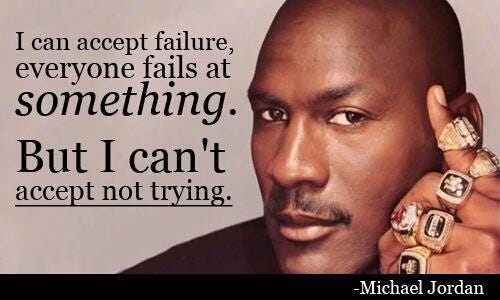All Things Retail #10: Acquire a Business, Carefully!
12 Things You "Must Verify" Before You Buy
Hey there, we’re back! Even though last week was a holiday week, we made nice progress in growing our presence (and received a bunch of nice comments). But, the effort never stops!
So, before you read further, it’s time for my weekly ask. Please share All Things Retail with anyone and everyone you believe may enjoy it (and hopefully benefit from it). Our goal is to add another 1,000 subscribers over the next month, and I can’t accomplish that without your help. So, again, please hit this button >>>
If you have not subscribed yet, please do so now. It’s free and we publish once a week so we don’t jam up your inbox.
Acquire a Business, Carefully!
12 Things You "Must Verify" Before You Buy
Business acquisitions are all the rage. Take a look at Twitter and you will read about buying businesses from SAAS companies all the way to FBA (Fulfilled by Amazon) sellers, storage facilities, laundromats and even vending routes. Many of these incorporate some elements of retail and some are pureplay retail. The logic of buying a business is it’s often a shorter path to meaningful cashflows and profitability than starting a business from scratch. Acquisitions are also a means of scaling an existing business faster as opposed to organic expansion (ex: a small chain of 10 stores buys 2 additional shops, creating instant 20% growth, in unit count at least).
I have no qualms with the logic of buying a business to gain scale faster and more efficiently. I have been involved with many acquisitions over the years and have seen several turn out splendidly, both financially and culturally (by the way, there is a significant relationship between cultural fit and financial returns). But, as you might imagine, there are plenty of deals that are horrible and should have been avoided. Sometimes the best acquisition is the one that never happens!
So, if you decide to buy a business, conducting proper (i.e., thorough) due diligence of the companies you are considering is a must. I will always tell you that a trusted attorney and accountant should participate in reviewing any potential acquisition. It’s a must and the costs are more than worthwhile as an insurance policy against a nasty and expensive surprise post-closing. That said, I have developed and used a due diligence list to use as a guide when reviewing possible acquisitions from a business (versus legal and accounting) perspective. While my list is not intended to be comprehensive (there are checklists that are hundreds of items long), it provides a solid starting point when looking at a company. In my mind, if I am not comfortable with the results of this review from a business perspective, it’s time to move on. If a target company passes my “smell test”, it’s time for the legal and financial/ accounting deep dives.
So, let’s take a look at my Top 12 Diligence List:
Financial Statements for the Past Five Years: Review trends in profitability, cost of goods, margins, expenses, and working capital. Are these metrics moving in a positive direction or are they flat or declining? Why? Do the operating ratios seem appropriate relative to other similar businesses? If not, find out the reasons and ensure all entries are accurate and appropriate. Is the owner drawing a salary? Are other operating metrics missing? If so, the bottom line may be overstated. Also determine who prepared the financial statements. The owner? An accounting firm (which is preferable)? Comparing these records to the company’s tax returns provide a good check and balance.
Tax Returns for the Past Five Years: Per above. These will give you validation that the numbers presented to you in #1, above, tie to what is being submitted to the IRS. Keep in mind this does not necessarily mean the numbers are accurate, so the deep dive noted in #1 is critical. Verify who prepared the returns as well.
Sales Records: In addition to looking at annual and quarterly numbers, analyze the monthly sales records for the past 36 months. Review sales by product categories, by customer, by vendor, and by channel (both internal and external. Ex: retail, e-commerce, wholesale, etc.). Does 80/20 apply? If so, is that a risk or an opportunity? Also identify and understand seasonal trends and anomalies in those trends.
Inventory: This refers to all finished goods as well as product components that are both owned and “committed to” by the target business. Review inventory at the end of each quarter for the past 3 years. Is it building or becoming more efficient? How many times does it turn by year? Check inventory aging (how old are the products on hand?). Where is it (U.S? Asia?)? You should also examine the inventory in person. Is it in good condition and sellable? Ultimately you will want to get the inventory professionally appraised but you can begin the process with this review. Keep in mind that inventory value may be the most negotiable element of a potential deal, so dig in deep.
Furniture, Fixtures, and Equipment (FF&E): This includes all hard assets of the target business other than inventory. These assets must be owned rather than leased (if leased on an Operating vs. a Capital Lease… your accountant can explain). Real estate, store fixtures, technology and office equipment, delivery vehicles, warehouse material handling equipment and similar assets of the business. The seller should provide a comprehensive list of FF&E for your review. You will look for current vs. original market value, current condition, upgrades/ repairs needed, and even the potential to sell off, if not needed, to offset a portion of the purchase price (this is popular with corporate jets, but you may need to set your sights a bit lower).
Liabilities: Your attorney and accountant will do most of the work here, but you should not only understand the extent of current liabilities, both short and long-term, but also where they come from. For instance, were assets such as capital equipment or accounts receivable used as collateral to secure short-term loans? Are there claims or liens against assets of the business? Are other settlements with employees, vendors, customers properly recorded as liabilities?
Debt: You need to be made aware of all outstanding notes, loans, and any other debt to which the business has agreed. Check the amounts, terms, and status of each. The obligation for satisfying the debt may or may not shift to you based on the structure of the final deal. Regardless, I like to understand what the logic was for assuming the various debts. Was it a necessity due to working capital shortfalls or was it a tactical use of other people’s money?
Accounts Receivable: Segment AR by “aged” timeframe (30 days, 31-60 days, 61-90 days, 90 days +). Ideally you will see most payables falling within the timeframe of the company’s normal terms. If not, it’s a red flag. Find out why their collections are so far in arrears and if the AR is even fully collectible. Also look at trends over time in the AR aging. Finally, in the spirit of 80/20, identify the 20% of customers that comprise (probably) 80% of your sales and see where they stand in terms of paying the company and their general business health as well.
Accounts Payable: Do the same exercise with AP as you did with AR, segmenting it by “days”. If the business is in arrears on its payables, you must dig in to why. Often, it’s a result of working capital challenges, which lead to other issues within the company. Late payments may also result in supply chain interruptions (possibly both products and services), vendor dissatisfaction, and even liens being placed against the business.
Contracts and Legal Documents: The goal here is to understand what the target business is committed to for the future. Identify each obligation, the remaining term, the cost by month/ quarter/ year, specific performance requirements, detailed terms as well as possible termination rights. Store leases, purchase agreements, union contracts, employment agreements, distribution deals, materials purchase agreements, licensing deals, consulting agreements, and more are all possible contracts that may obligate you, as the purchaser, to a bunch of onerous stuff. As part of this review, you should also check the company’s articles of incorporation, DBA’s, trademarks, patents, copyrights, partnership agreements, ownership split, non-disclosure/ non-competition agreements, etc.
Locations: While reviewing locations and trade areas is important for all businesses, it is critical for physical retailers. Identify each store location, size, lease terms including expiration and options to extend, co-tenancy, parking, visibility, local economy / trade area demographics (both with a 3-year trend), and competition just as if these were potential new stores. If you cannot personally visit each location, try to have someone local do it and report back. Worst case, get pictures inside and out of the layout and condition of each store.
Employees and Organizational Chart: One element of this review is structural, meaning you need to learn what positions exist throughout the business. Analyze roles, responsibilities, reporting structure, pay scales (and compare to market pay), pending wage/ salary increases, benefit programs (with related costs), bonus programs, vacation policy, employment agreements, stock option programs, union contracts as well as all open/ pending employee lawsuits. The second portion of this effort is more qualitative. Who are the key players within the business? Are they happy or a flight risk? Where do problems exist with the team? Is the team too large or too small, and what’s the cost or cost savings of rightsizing it? Will the current culture fit with new ownership?
So that’s my Top 12. If you dig into these it will give you a great perspective on the company under consideration. Of course, there are many other things to review before you move ahead. Some of these include:
Company Reputation
Price Competitiveness
Customer Acquisition Cost
Customer Database (complete and current)
Customer Loyalty, Lifetime value and Churn
Marketing Strategy & Spend
Vendor Base
Tooling Listing with Location and Condition
Product Selling & Storage Requirements (testing, certifications, etc.)
Product Return Rates
Product Defect Rates
Insurance Requirements & Cost
Social Media Presence
Online Seller & Product Reviews
Broker Fees (if applicable)
Acquiring a business is exciting. It can be a very emotional experience when you think about owning a new business or growing your existing business. But take your time, do your diligence, and try to keep your emotions in check as you complete your analysis. Your decision to move forward, or not, should be based on the facts you (and your attorney/ accountant) uncover during this process and not any degree of “wishful thinking” (which happens more than you might imagine). Good luck!











